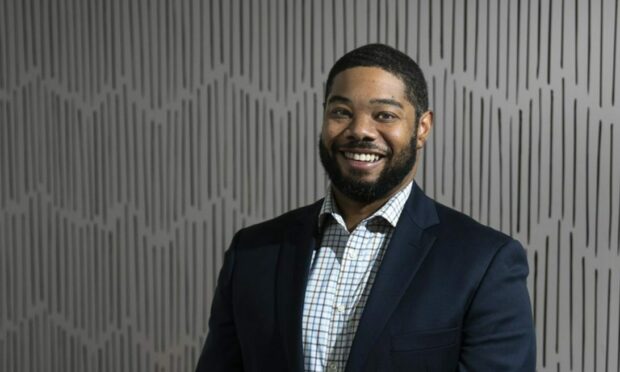HOME | ABOUT US | MEDIA KIT | CONTACT US | INQUIRE
HOME | ABOUT US | MEDIA KIT | CONTACT US | INQUIRE

Lance Claiborne, President at The Builders. Photo provided by The Builders.
Q. With Panasonic Energy’s construction update last week and hiring underway for a workforce of 4,000, can you tell us what you’re hearing about local efforts to connect workers to those jobs in De Soto?
"And that unprecedented scale and timeline are so compacted, that’s what makes this such an enormous opportunity for Kansas City and the Midwest."
A. It’s a vast network, and I’m learning more about it every day. It’s no secret that almost every industry in the country, the world, in fact, is struggling to figure out how to connect the opportunities they’re projecting and people to fill those opportunities. It’s a head-scratcher, it’s hard, and it leads you on a tough, winding path to get to the bottom. There are a lot of great organizations here doing the work to figure that out and help people investing in that community connect those dots.
Q. High-tech manufacturing differs in fundamental ways from the construction trades, but your labor issues are intertwined, aren’t they?
A. Yes, our industry is not isolated from that. We partner with tons of groups and not-for-profit organizations to make sure 1) Where we can, we are upskilling people to prepare to them to come into our industry, and 2) connect the dots for people not aware of what our industry is doing. The opportunities are so robust now, and there’s no end in sight for people or companies looking to locate or relocate.
Q. And yet, we’re near historically low levels of unemployment. How does that complicate the challenge of finding workers?
A. Before I came to this role in October, during my time in Philly, I always tried to tell that story. It always seemed to fall on deaf ears, that when you make investments and recruit the right groups, it’s the start, not the end. Everyone thinks, “well great, this project will mean a few thousand construction jobs.” No: Investment begets investment.
Q. What’s your take on the scope of development here?
A. The big difference here that I’d not seen on the coast is the scale. The scale is so off the charts it literally is staggering—vastly different than what we’ve experienced at any given time. And that unprecedented scale and timeline are so compacted, that’s what makes this such an enormous opportunity for Kansas City and the Midwest. So we would do ourselves a great disservice if we don’t ensure that these projects get off without a hitch and are done on time. Making sure we’re connecting residents in need of opportunity for those jobs first. I’ve tried to do my best since I got here to let people know that the Midwest is one of the best-kept secrets in the country. I know that at a certain point, we start to attract other folks from around the country, but we want to make sure those who are from here get the first crack at these new jobs.
Q. A lot of this development is on the metro area periphery, complicating the transportation piece. Do you see such large-scale sites emerging closer to the city center?
A. At that scale it is kind of hard, but there are places for those to fit. The Economic Development Corp. of Kansas City is going through site selection to help folks strategically locate and we’ve dealt with the peripheries. On their list are sites closer to the core. But again, the sheer scale of a Panasonic is breathtaking. Almost impossible to conceive of until you’ve seen it. But there are tons of opportunities closer to the center, and we know the EDC and Kansas City Area Development Authority are trying to fill those.